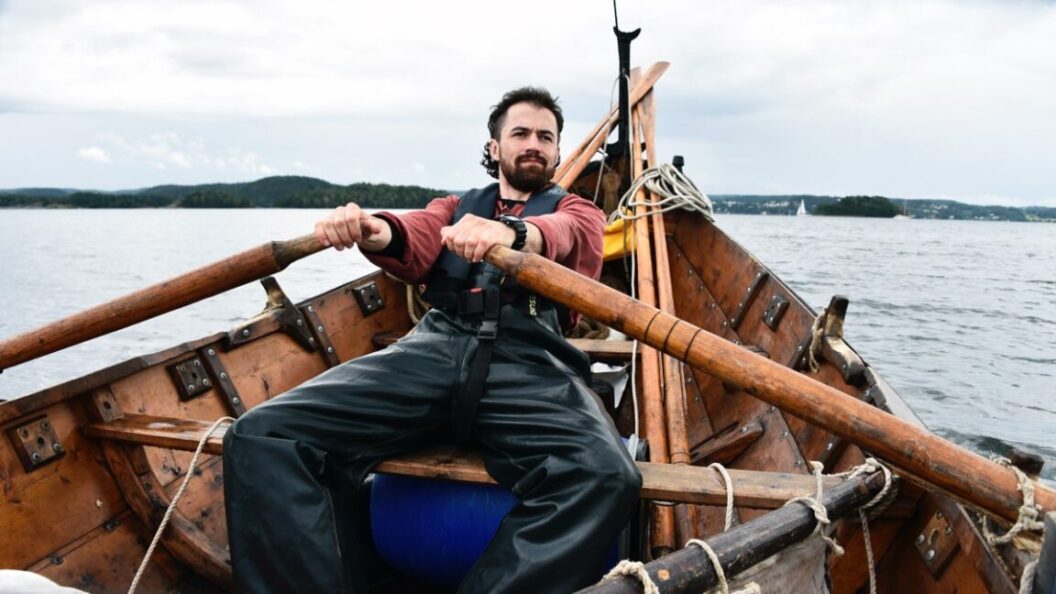Navigating the Viking Way: A Modern Exploration of Ancient Seafaring
Introduction
The saga of Viking exploration and seafaring continues to captivate historians and enthusiasts alike, with recent expeditions shedding light on how these ancient mariners navigated vast waters. Jarrett, a modern-day sailor, provides insights into his voyage through the Scandinavian seas, reflecting on the challenges and fascinating methodologies employed by the Vikings. This journey reveals not only the physical endurance required for nautical adventures but also the depth of cultural knowledge ingrained in maritime practices long before the advent of modern navigational tools.
Life at Sea: The Viking Experience
Sailing the unpredictable waters of Scandinavia, Jarrett describes the rigors of life aboard a Viking ship. "On the long-range voyages, we worked in watches of four hours on and four hours off, and that is just about long enough to get some sleep… but also just about short enough that you don’t get really, really, really cold, which is obviously a risk," he recounted. Crewmembers donned multiple layers—up to six of wool—to stave off the chill, embodying a unique survival strategy that harkens back to Viking ingenuity.
The harsh realities of sailing emerged when a critical mast spar broke, prompting the crew to adapt quickly. They fashioned a temporary solution by lashing two oars together to keep the mainsail functional, an illustration of their resilience. Jarrett noted the absence of a safety boat or engine, underscoring the self-reliance characteristic of Viking expeditions. A life raft was onboard, but remarkably, it remained unused throughout the journey.
The Art of Navigation: A Mental Map
Jarrett argues that Vikings navigated the treacherous seas with an intuitive understanding rather than reliance on tools like maps or compasses. He asserts the concept of "mental maps" or a "maritime cultural mindscape," grounded in personal experience and passed down through generations. Such maps were perhaps influenced by local myths tied to recognizable coastal landmarks, allowing sailors to traverse the waves confidently.
"People had been moving by boat along the west coast of Scandinavia for a really, really, really long time… probably since the late Neolithic, if not earlier—thousands of years before the Viking age," Jarrett explained. He emphasized the existence of extensive trading networks well before the Viking era, evident in the place names that dot the western coastline. His primary argument suggests that after 3,000 years of coastal navigation, the need for complex navigational instruments diminished significantly.
Cultural Insights and Historical Context
The expedition offers invaluable clarity on Viking culture and its seafaring legacy. Jarrett’s experiences not only highlight the physical nature of Viking voyages but also their reliance on oral traditions and cultural memory. This contrasts sharply with the modern view of navigation, which leans heavily on technological aids.
Moreover, Jarrett posits that the Viking tradition of passing down knowledge orally allowed for an adaptable yet effective navigation style deeply interwoven with their environment. This approach reflects a profound understanding of seafaring that transcends simple travel; it encompasses a rich tapestry of history, culture, and survival skills developed over millennia.
Conclusion: Reflections on Viking Legacy
As Jarrett’s journey epitomizes, the Vikings were marvelously adaptable sailors and navigators who evidently excelled without modern instruments. Their methods emphasize a human connection to nature and history, showcasing a unique approach to exploration and trade.
This contemporary look into Viking seafaring not only rekindles interest in their nautical exploits but also prompts reflections on how ancient practices influence modern navigation. Jarrett’s exploration underscores the significant impact Vikings had on maritime history, proving that understanding the past can enrich our present and future in profound ways. The implications of his findings extend beyond the seas, inviting a reevaluation of cultural practices and navigational techniques that may resonate with modern explorers today.









